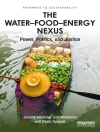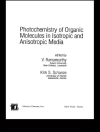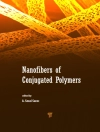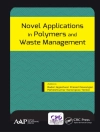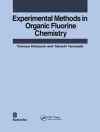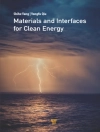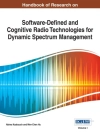There have been many volumes written that claim to be the most ‘comprehensive’ compendium or handbook on chemical data. These wieldy volumes are often too big and extraneous to be useful to the practicing engineer. This new volume aims to be the most useful ‘go to’ volume for the working engineer, scientist, or chemist who needs quick answers to daily questions about materials or chemicals and doesn’t want to go on long searches through voluminous tomes or lengthy internet searches. Covering only the most commonly used chemicals in the most important processes in industry, A Guide to Safe Material and Chemical Handling includes industrial chemicals, such as gases, fuels, and water, which are not incorporated in most ‘comprehensive’ books on materials and chemical properties. Safety plans and procedures that can be implemented by any engineer or plant manager by following the easy, step-by-step instructions in the book are also provided.
Tabla de materias
Preface
Author Biographies.
List of Tables.
1. Corrosion.
1.1 General Information.
1.2 Types of Corrosion.
1.3 Materials Evaluation and Selection.
1.4 Corrosion Data.
2. Material Properties and Selection.
2.1 General Properties and Selection Criteria.
2.2 Cast Irons.
2.2.1 Gray Cast Iron.
2.2.2 White Cast Iron.
2.2.3 Malleable Cast Iron.
2.2.4 Nodular Cast Iron.
2.2.5 Austenitic Cast Iron.
2.2.6 Abrasion Resistance.
2.2.7 Corrosion Resistance.
2.2.8 Temperature Resistance.
2.2.9 Welding Cast Iron.
2.3 Steels.
2.3.1 Low Carbon Steels (Mild Steel).
2.3.2 Corrosion Resistance.
2.3.3 Heat Resistance.
2.3.4 Low Temperatures.
2.3.5 High-Carbon Steels.
2.3.6 Low-Carbon, Low-Alloy Steels.
2.3.7 Mechanical Properties.
2.3.8 Corrosion Resistance.
2.3.9 Oxidation Resistance and Creep Strength.
2.3.10 Low-Temperature Ductility.
2.3.11 High-Carbon, Low-Alloy Steels.
2.3.12 High-Alloy Steels.
2.3.12.1 Chromium Steels (400 Series), Low-Carbon Ferritic (Type
405).
2.3.12.2 Medium Carbon Martensitic.
2.3.12.3 Medium Carbon Ferrule.
2.3.12.4 Chromium/Nickel Austenitic Steels (300 Series).
2.3.13 Precipitation Hardening Stainless Steels.
2.4 Materials Properties Data Tables.
3. Property Tables of Various Liquids, Gases, and
Fuels.
3.1 General Properties of Hydrocarbons.
3.1.1 General Information.
3.1.2 Isomers.
3.1.3 Alkenes.
3.1.4 Alkynes.
3.1.5 Straight-Chain Hydrocarbon Nomenclature.
3.1.6 Aromatic Hydrocarbons.
3.1.7 Hydrocarbon Derivatives.
3.1.8 Halogenated Hydrocarbons.
3.1.9 Alcohols.
3.1.10 Ethers.
3.1.11 Ketones.
3.1.12 Aldehydes.
3.1.13 Peroxides.
3.1.14 Esters.
3.1.15 Amines.
3.2 Fuel Properties.
3.2.1 Crude Oil.
3.2.2 Gasoline.
3.2.3 Bioethanol and ETBE.
3.2.4 Diesel Oil, Kerosene, Jet A1, and Biodiesel.
3.2.5 Fuel Oil.
3.2.6 Natural Gas, Biogas, LPG and Methane Hydrates.
3.2.7 Hydrogen.
4. General Guidelines on Fire Protection, Evacuation, First
Responder, and Emergency Planning.
4.1 Flammability Properties.
4.1.1.1 General Information.
4.1.1.2 Flammability Designation.
4.1.2 Ignition Temperature.
4.1.3 Flammability Limits.
4.1.4 Vapor Density.
4.1.5 Specific Gravity.
4.1.6 Water Solubility.
4.1.7 Responding to Fires.
4.1.8 Firefighting Agents.
4.1.8.1 Water.
4.1.8.2 Foam.
4.1.8.3 Alcohol-Resistant Foams.
4.1.8.4 High Expansion Foams.
4.1.8.5 Other Extinguishing Agents.
4.1.8.6 Carbon Dioxide.
4.1.9 Electrical Fire Prevention.
4.1.10 Firefighting Guidance.
4.1.10.1 Types.
4.1.10.2 Firefighting Agents and Extinguishers.
4.1.10.3 Vehicles.
4.1.10.4 Firefighting Gear.
4.1.11 Specialized Rescue Procedures.
4.1.12 First Responder to Electrical Fire Incidents.
4.1.13 Evacuation Planning.
4.1.13.1 Designated Roles and Responsibilities.
4.1.13.2 Preparation & Planning for Emergencies.
4.1.14 Evacuation Procedure.
4.1.15 General.
4.1.16 Template for Emergency Evacuation Plan.
5. Chemical Data.
6. Chemical Safety Data.
7. Recommended Safe Levels of Exposure.
8. Fire and Chemical Reactivity Data.
Sobre el autor
NICHOLAS P. CHEREMISINOFF is a consultant to industry,
international lending institutions and donor agencies on pollution
prevention and responsible environmental care practices. With a
career spanning more than 30 years, he is also the author,
co-author or editor of more than 150 technical books and hundreds
of state of the art review and scientific articles. He received his
B.Sc., M.Sc., and Ph.D. degrees in chemical engineering from
Clarkson College of Technology.
ANTON DAVLETSHIN received a degree in construction
management from Virginia Polytechnic Institute and has most
recently joined N&P Ltd, an environmental services group that
focuses on pollution prevention and environmental management. Mr.
Davletshin has focused on green building practices and technologies
and has assisted N&P Ltd on a number of site investigations
including the Tennessee Valley Authority flyash spill.


